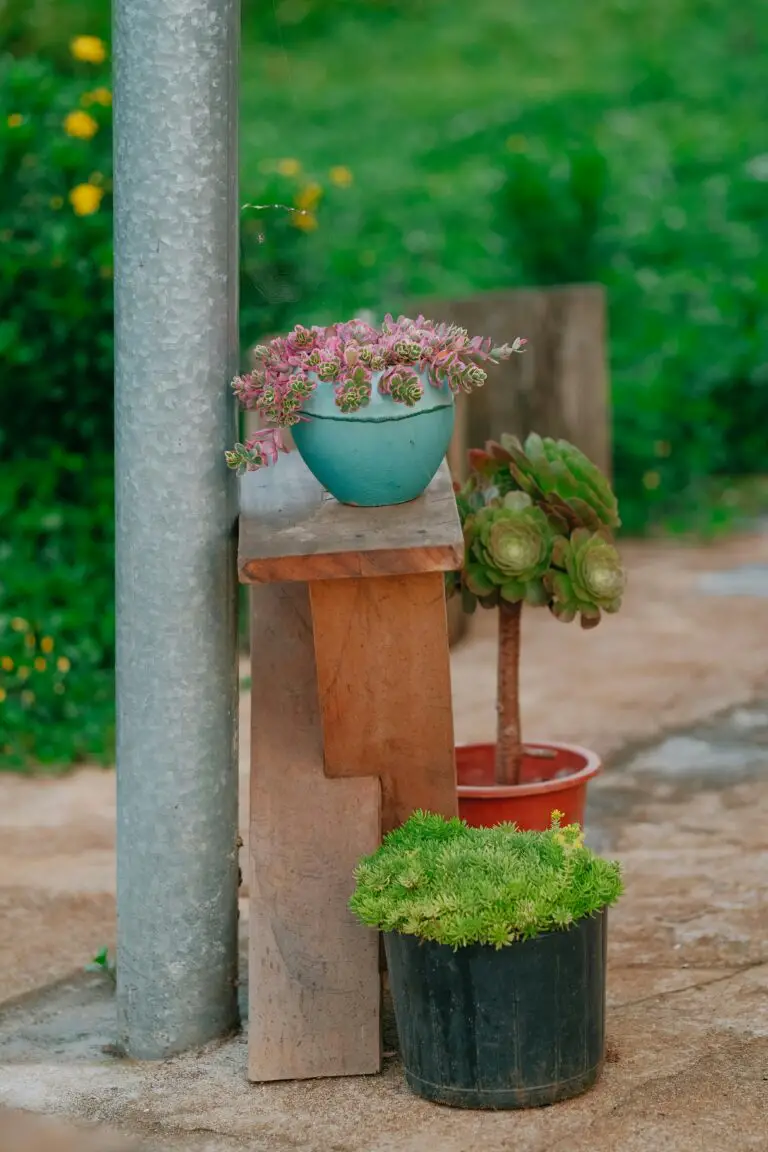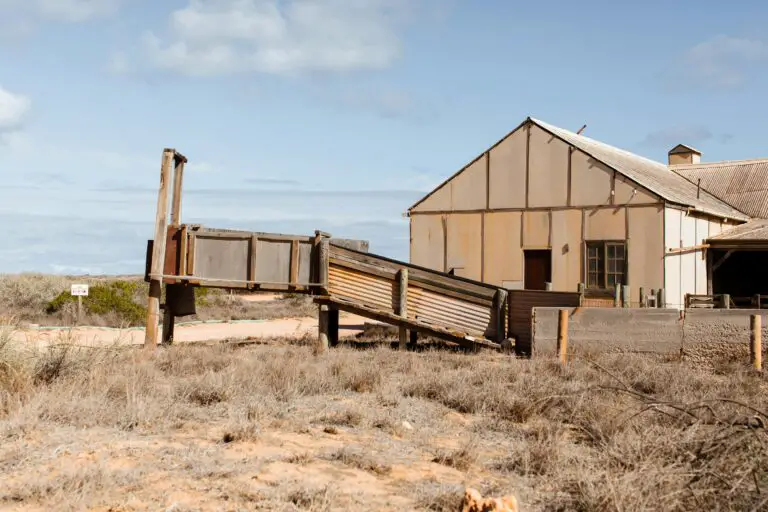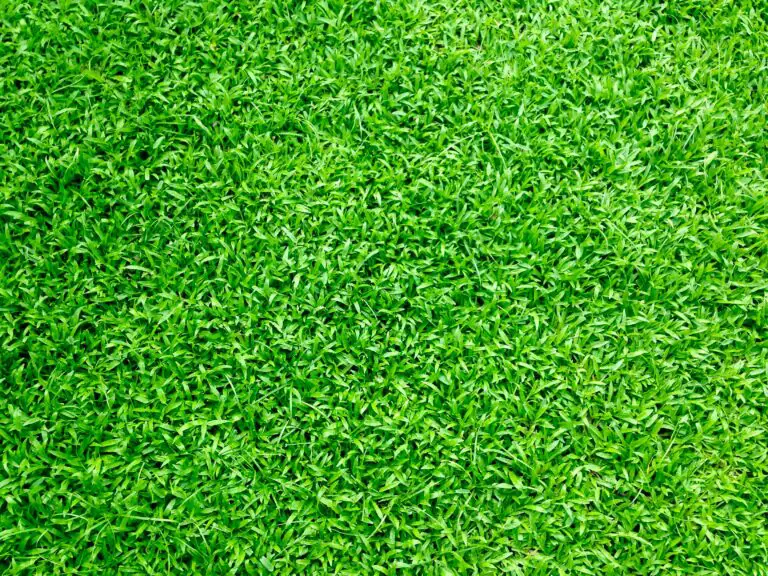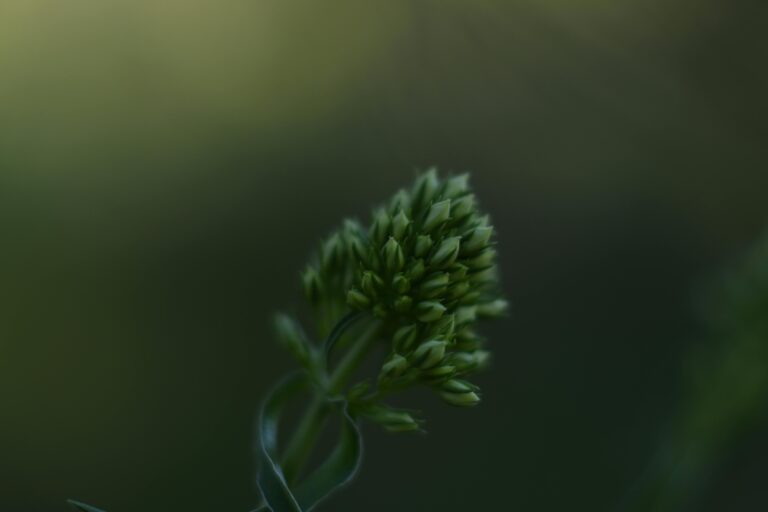Introduction
Imagine a world where your lush green lawn is seamlessly complemented by the vibrant hues of sedum species, adding an element of texture and color that breathes life into your garden. This scenario poses an intriguing question: Will sedum choke out grass, or can they coexist in a beautiful, symbiotic relationship within your landscape design? Let’s dig into the peculiarities of these two plant types and unearth the surprising interaction that unfolds in the tussle for territory.
On one side, we have sedum: low-maintenance, drought-tolerant, and a real showstopper with its fleshy leaves and star-shaped flowers. It has a reputation for being a hardy groundcover, quick to establish and spread. Could it be too aggressive for the delicate blades of grass that many cherish in their yards? Enhance Your Garden’s Charm with the right balance and learn how to keep your sedum in check.
Grassy areas, on the other hand, are the classic choice for lawns due to their soft texture and uniform appearance. They provide a cooling effect, help reduce soil erosion, and are the perfect backdrop for garden picnics and play. But when grass meets the persistent sedum, it’s like a delicate ballet – a competition for light and space where only the most adaptable will thrive.
For a visual guide on managing sedum and grass together, take a peek at this enlightening video:
As gardeners, it’s important to understand the characteristics that could tip the balance in favor of one or the other. Sedum, for example, can be a voracious grower in the right conditions, potentially overshadowing grass if not managed properly. If you’re considering adding sedum to your succulent garden, be mindful of its growth habits to maintain a harmonious garden design.
Ultimately, whether sedum will overpower your lawn depends on a variety of factors, including the species of sedum, the type of grass, and their respective growing conditions. By analyzing the dynamic between these two plant types, you can create a garden environment where both can flourish, adding value to your home’s curb appeal and becoming a topic of conversation among your green-thumbed friends.
What is Sedum?
Fancy a green tapestry in your garden that’s virtually unstoppable? Enter sedum, the ground cover maestro! These rugged little troopers are the darlings of the gardening world, known for their no-fuss attitude and ability to thrive where others merely survive. Picture a plant that’s not just easy on the eyes but also tough as nails – welcome to the world of sedum plants, also affectionately known as stonecrops.

Characterized by their succulent leaves, which store water like nature’s little canteens, sedums are ready for all that Mother Nature can throw at them. They come in an array of colors and textures, with varieties like ‘Autumn Joy’ that offer dusty pinks and ‘Dragon’s Blood’ that boast deep, fiery reds. Gardeners prize these hardy perennials not just for their beauty but for their role as champions of ground cover.
What’s the buzz all about? Well, picture this: sedum plants spreading their dense canopies across a garden, outmaneuvering weeds and sharing their space with friendly pollinators. It’s no wonder they’re valued as a green guardian that keeps the unruly weeds at bay, leaving your garden with a more manicured look. Yet it’s not just their practicality that makes them a hit; it’s also their year-round performance, with some varieties like ‘Angelina’ flashing hints of gold in the winter sunlight.
Now, why do savvy gardeners flip over sedums for ground cover? These plants play the long game, establishing quickly and covering ground efficiently. In our guide to robust ground covers, we spill the tea on just how versatile these plants are. So whether you’re battling clay, sand, or rocky terrains, sedums stand their ground, asking for little while giving a lot.
Every plant has its stage, and for sedums, it’s the warm embrace of the sun they adore. Sun-worshippers by nature, these plants crave the spotlight, yet they aren’t drama queens when it comes to soil. In fact, they’re quite undemanding – poor soil quality? Bring it on! With sedum, your garden’s narrative changes from high maintenance to low-key chic, converting rough patches into lush, vibrant scenes.
So, when the lawn is more tiring than inspiring, and you’re pondering ‘will sedum choke out grass?’ consider the sedum’s credentials. They’re the understated stars of the garden, where less watering and weeding means more time to enjoy the view. If a low-maintenance, drought-resistant, and visually interesting garden is your endgame, sedum might just be the MVP you need.
Understanding the Growth Patterns of Sedum
Have you ever marveled at a sedum’s relentless march across a rocky terrain, leaving a lush carpet of green in its wake? Sedum, also known as stonecrop, is a ground-hugging champion, notorious for its spreading habits. This plant is the Houdini of the horticultural world, thriving in conditions where most would surrender. Let’s dig into the world of sedum and discover whether it can truly outcompete the grass in your lawn.
First off, sedum has an impressive ability to propagate itself. This isn’t a plant that needs pampering. Break a piece off, drop it on the soil, and voilà – it’s like you’ve planted an entirely new sedum. It’s practically the plant version of a ‘buy one, get one free’ offer at every little mishap. Given the right conditions – well-draining soil and a good amount of sunlight – it just keeps on giving.
Its success lies in its fleshy leaves, which retain water like a camel’s hump, allowing it to withstand dry spells that leave your lawn gasping for a drink. And while grass might need regular watering to stay vibrant and green, sedum is more of a ‘set it and forget it’ kind of plant. It’s why you’ll often find it basking in the full glory of the sun, in areas where grass would be throwing in the towel (or rather, the leaf).

When it comes to spreading, sedum is like the friend who arrives at a potluck and ends up charming everyone. It doesn’t rush; it meanders and moseys its way across your garden, filling in gaps and artfully sprawling over edges. It’s not aggressive, but it’s determined. Before you know it, it can become the star of the show, potentially overshadowing the grass beneath it.
Sedum’s adaptability is another ace up its sleeve. It won’t just survive in poor soil; it’ll thrive, flaunting its colorful leaves and starry flowers with the kind of gusto you wish your lawn had. If you’ve ever visited our guide on sedum varieties and growing tips, you’ll know these succulent perennials are as versatile as they come. From the silvery cushions of ‘Cape Blanco’ to the deep purples of ‘Bertram Anderson’, sedum can create a mosaic that most grassy lawns could only dream of.
So, will sedum inevitably choke out the grass in your garden? Not necessarily. Like any good garden inhabitant, it plays as part of the ecosystem. But if you’re looking to maintain a sedum-free lawn, you’ll need a strategy. And on the flip side, if you’re seeking an easy-care groundcover that laughs in the face of drought, sedum might just be your new best friend. But you’ll need to keep an eye on it – because with its tenacity for life, sedum is the embodiment of ‘where there’s a will, there’s a way’, and its way might just lead to a takeover of every nook and cranny that your lawn once called home.
The Battle Underground: Root Systems Explained
Imagine your garden as a bustling metropolis below the soil where roots are the ever-reaching highways connecting substations of nutrient uptake. Sedum, often prized for its drought resistance and vibrant foliage, could be seen as a new rail line seeking to expand in this underground city. But will sedum choke out grass, the established green carpet that many homeowners cherish?
Sedum, known for its shallow but dense root system, spreads out like a net just beneath the surface. This allows it to quickly colonize an area, absorbing moisture and nutrients efficiently. Grass, on the other hand, has a more traditional root structure with a combination of deep and superficial roots, drilling down to tap into subterranean resources. When these two meet, it’s a competition for the very lifeblood of their existence—water and essential minerals.
In the quest for dominance, sedum doesn’t fight dirty; it’s just naturally adept at survival in lean conditions. Picture a summer drought: sedum’s roots plow forward like little green tanks, unphased by the heat, while grass roots might be gasping for moisture. Over time, in the right conditions, sedum can outcompete grass simply by outlasting it, taking over territory as the grass weakens and thins.
Now imagine a well-irrigated lawn with rich, loose soil—here, grass has the home-field advantage. Its longer, threading roots can delve deep and hold their ground against the sedum siege. In lush landscapes, the two can sometimes coexist peacefully, with sedum adorning the borders and grass commanding the field.

Real-life examples are testimony to the intricate dance between sedum and grass. There’s the garden enthusiast who watched her patch of sedum expand like a colorful quilt over her lawn, and the landscaper who’s seen vigorous green turf refuse to yield, keeping sedum at bay. It’s a dynamic interaction, one that depends heavily on local conditions and the gardener’s intent.
Ultimately, understanding the root dynamics of these two plants is key to predicting their interaction. Gardeners considering sedum as an alternative to grass should consider the balance of moisture, soil type, and light—they’re the tickets to either a sedum takeover or a grassy reign. By recognizing the strengths and limitations of each plant’s root system, it becomes easier to craft a landscape where both may thrive, or where one is chosen to flourish solo.
A Root’s Perspective
From the root’s perspective, the soil is a vast battleground. Roots are like soldiers in constant skirmish for control over territory—the fertile pockets of earth. No matter which side takes a lead in this underground struggle, the gardener holds the power to tip the scales, to be the ultimate strategist in determining “will sedum choke out grass?”.
Can Sedum Actually Choke Out Grass?
Welcome to the tussle of the turfs! It’s an intriguing showdown between the steadfast lawn and the ever-sprawling sedum. Could this hardy succulent really stage a coup and seize control over your pristine grass? Let’s dig into the root of the matter.
Sedum, known for its drought-tolerant and low-maintenance nature, has often been a choice pick for gardeners looking to add a splash of resilience to their green spaces. But with its vigor, there’s a whispering worry among lawn enthusiasts: will sedum choke out grass?
Imagine a sunny, well-drained slope in your backyard where the grass has always seemed to struggle. In its place, you notice sedum, with its tough and tenacious character, creeping in. This isn’t sheer coincidence—it’s a sedum takeover in its early stages. Sedum thrives in areas where grasses falter, especially in dry, impoverished soil where these hardy plants can outcompete the more delicate turf.
Picture the charming scene of an old, abandoned field—once a vibrant tapestry of green, now being slowly but surely embroidered with a patchwork of sedum. In scenarios where the upkeep of grass falters due to neglect or poor conditions, sedum seizes the opportunity to spread, its succulent leaves unfurling with quiet confidence.
But don’t raise the white flag to your lawn just yet. Grass, when properly nourished and cared for, can stand its ground against the spreading sedum. It’s a delicate balance, a dance of sorts, between the two. Sedum can edge out the green blades if given the chance, but understanding and respecting the needs of each can lead to a harmonious coexistence—the yin and yang of your garden landscape.

Real-life examples are not far-flung. Gardeners across various regions have observed this phenomenon. In regions with hot, arid summers, for instance, sedum has been seen outlasting the thirsty grass, becoming the last plant standing. Conversely, in lush, well-irrigated lawns, grass maintains its reign, with the sedum politely staying within its borders—a testament to the plant kingdom’s adaptability and survival instincts.
When we talk about sedum overrunning grass, we’re often picturing a battle of survival strategies. It all boils down to the environment and the care given. With the right conditions, sedum’s pluck and perseverance could very well make it a formidable opponent to the cultivated green canvas of our lawns.
Proactive Measures: Balancing Sedum and Grass
Creating a harmonious garden that showcases the beauty of sedum without the fear of it becoming a botanical bully to your grass requires a bit of know-how. The secret? It’s all about balance. Let’s explore some tried-and-true methods to ensure that your lush, verdant grass can coexist in blissful harmony with the seductive charm of sedum.
Understanding Sedum’s Spreading Habit
Sedum, often known as stonecrop, is a succulent that thrives with minimal fuss. While this trait makes it a dream for gardeners seeking low-maintenance groundcover, it does mean that sedum can sometimes spread eagerly, nudging its way into the territory of other plants, including your grass. To mitigate this, it’s essential to recognize the type of sedum you have as some are more vigorous spreaders than others.
Smart Planting Techniques
When introducing sedum to your garden, consider planting it in raised beds or bordered areas where its expansion can be contained. This technique not only prevents sedum from choking out your grass but also highlights its stunning foliage and vibrant blooms. Pairing sedum with a complementary groundcover that enjoys similar growing conditions can act as a natural barrier, deterring sedum from inching its way into your grass’s area.
Another clever tactic is to strategically place hardscaping elements, such as stepping stones or decorative boulders, between your sedum and grass. These physical barriers not only add aesthetic value but also serve as a clear boundary that sedum is less likely to cross.
Maintenance Schedules to Promote Balance
Regular maintenance is paramount in preventing sedum from overstepping its bounds. By setting a schedule for trimming back sedum, you can control its growth and maintain the aesthetic appeal of your garden. Early spring is an excellent time to cut back sedum, just before the new growth starts, ensuring that it doesn’t smother your grass as the growing season kicks into gear.
Furthermore, monitoring the health of your lawn is crucial. A robust, well-cared-for grass will be more resistant to being overrun by sedum or any other plant. Make sure you are fulfilling your lawn’s basic needs: adequate watering, fertilization, and aeration. A strong lawn is the best defense against unwanted sedum invasion.
Now that we’ve laid the groundwork, let’s get a visual aid to anchor these concepts. Below is a video that offers insightful information on sedum and grass maintenance:
Embrace these proactive measures, and watch your garden flourish into a living tapestry where sedum adds its allure without ever declaring war on your grass. The key is consistent care and an eye for design, coupled with a genuine love for the green world under your guardianship.
When Sedum Takes Over: Remediation Strategies
Imagine stepping out into your garden, a mug of your favorite brew in hand, expecting to gaze upon a lush, green lawn, only to spot swaths of sedum tenaciously asserting themselves among the blades of grass. Sedum, a groundcover known for its hardy nature and drought resistance, can sometimes become a little too comfortable, edging into territories we’d typically reserve for grass. If you notice sedum beginning to dominate your lawn, don’t fret—there are tactics to reclaim your green oasis.

Physical removal is often the first line of defense. Arm yourself with garden gloves and a trowel, and get down to business. It’s a method that can be oddly satisfying—like weeding, but with a mission. The goal here is to meticulously dislodge the sedum from the grass, ensuring that you remove as much of the root system as possible to prevent a quick resurgence. Consider enlisting the help of family or friends for a group gardening day; many hands make light work!
For larger invasions, chemical treatments might be more effective. Specific herbicides can target sedum without harming the grass, but it is imperative to follow the directions to the letter. The pros? Chemicals can save time and effort on large patches. The cons, however, can be significant. There’s the potential harm to the environment, a concern for the well-being of your other plants, and ensuring the safety of your pets and family. It’s essential to consider whether the sedum’s advancement is significant enough to warrant this approach.
In some cases, adjusting lawn care practices can deter sedum growth. Sedum thrives in conditions where grass struggles, so improving the health of your lawn can be a natural deterrent. This can mean aerating compacted soil, adjusting your watering schedule, or adding the right type of fertilizer. It’s like giving your grass well-fitting armor in the battle against sedum encroachment.
Remember, sometimes the best strategy is prevention. Keep your lawn robust through regular maintenance, and be vigilant about removing sedum sprouts before they get a chance to spread. With these strategies, your lawn doesn’t have to surrender to the sedum sprawl. It’s about staying observant and acting swiftly, turning the tables to ensure your grass remains the rightful ruler of your yard.
The Benefits of Sedum in Landscaping
When it comes to sprucing up your garden, few plants offer quite the versatility and vibrancy as sedum. This resilient ground cover, which comes in a dazzling array of colors and forms, isn’t just easy on the eyes. But can it stand its ground against the steady green tide of your lawn? Absolutely, and here’s why sedum might just be the secret weapon your garden has been waiting for.

Kickstarting our green-fingered tour, let’s talk sustainability. Sedum plants are drought-tolerant heroes that laugh in the face of water restrictions. They store water in their thick, succulent leaves, which means they can survive and thrive in dry conditions where your average grass might throw in the towel. Translation? Less watering, lower bills, and more time to enjoy your lush, green sanctuary.
But sedum isn’t just tough; it’s also a crowd-pleaser for local wildlife. Imagine your garden buzzing with activity as bees and butterflies flit from flower to flower, drawn in by the sedum’s nectar-rich blooms. That’s right, by including sedum in your landscape, you’re not just creating a feast for the eyes but a buffet for our pollinating pals, enhancing biodiversity right in your backyard.
On the aesthetic front, sedum is like the Swiss Army knife of the plant world. Ground cover varieties can soften the edges of stone pathways and bring life to rock gardens, while taller species add depth and contrast to flower beds. Think of that delightful pop of color when autumn comes knocking, and your sedum transforms into vibrant shades of rust and gold. It’s like Mother Nature’s own fireworks display!
And let’s not overlook the hands-off approach sedum allows gardeners to take. This low-maintenance champion asks for very little but gives back in spades. No wonder it’s becoming a fixture in contemporary landscape design, where gardeners are seeking elegant solutions that offer ecological benefits without the fuss.
So, will sedum choke out grass? In the contest for your lawn’s affections, sedum brings a lot more than just good looks to the table. It’s a resilient, water-wise, wildlife-friendly, and design-flexible contender that doesn’t just coexist with your grass – it complements it, elevating your outdoor space to an enviable garden paradise.
Frequently Asked Questions
Are you pondering over planting sedum but worried it might be the green gladiator in your garden battles? How does this hardy perennial fare when it squares up against your lawn? Let’s dig into some common questions to unearth the truth about sedum’s interaction with grass!
Will Sedum Turn My Yard into a Green Battleground?
Introducing sedum to your landscape might bring to mind images of a botanical tug-of-war, but in reality, the spread of sedum depends on factors like climate, soil quality, and yard care routines. Typically, sedum, with its plump leaves and starry flowers, isn’t the heavyweight champion in a matchup against vigorous lawn grasses, but in some arid or rocky environments, sedum could claim the upper hand.
Imagine a sunny front yard with sedum creeping along the rocky edges – this ground cover isn’t likely to invade the main lawn but will conquer any nooks and crannies that grasses can’t reach. Charming and low-maintenance, sedum brings life to otherwise barren patches with minimal effort from you.
Where Should I Plant Sedum for a Peaceful Coexistence?
For those of you who reside in zones 3 to 9, sedum is your garden ally, eager to blanket the awkward corners where your mower can’t reach. Planting sedum on the sunny fringes or where your grass struggles gives you an effortless green spread that’s drought tolerant to boot!
Picture this: your thriving turf bordered by a tapestry of sedum varieties, from the radiant ‘Autumn Joy’ to the ground-hugging ‘Dragon’s Blood’, creating a mesmerizing mosaic that’s visually stunning and ecologically sensible.

Can Sedum Be a Lawn’s Best Friend?
Believe it or not, sedum can be your lawn’s best friend in the right settings. Because it asks for so little yet offers so much – from attracting pollinators to enduring dry spells unscathed – sedum can play a crucial role in a biodiverse and resilient garden. It’s about striking that balance through thoughtful placement and variety selection.
Take a stroll through a garden where sedum and grass live in harmony, and you’ll witness a versatile duo that can reduce your lawn’s thirst for water and care. It’s a win-win for nature and your weekend time-off!
So, if you’re considering sedum for your outdoor space, remember to assess your local conditions, know your garden’s personality, and choose a strategy that fosters partnership rather than competition. With that approach, your grass and sedum can be great neighbors, not turf tyrants!



